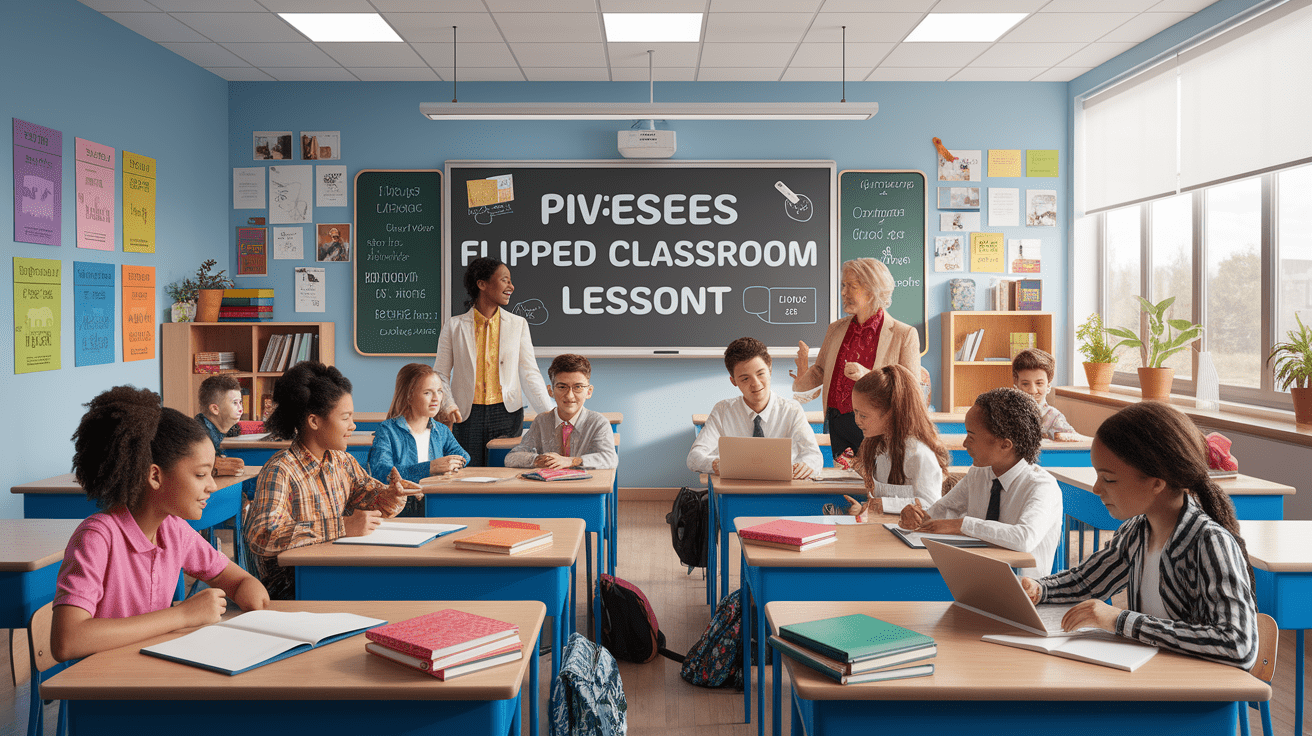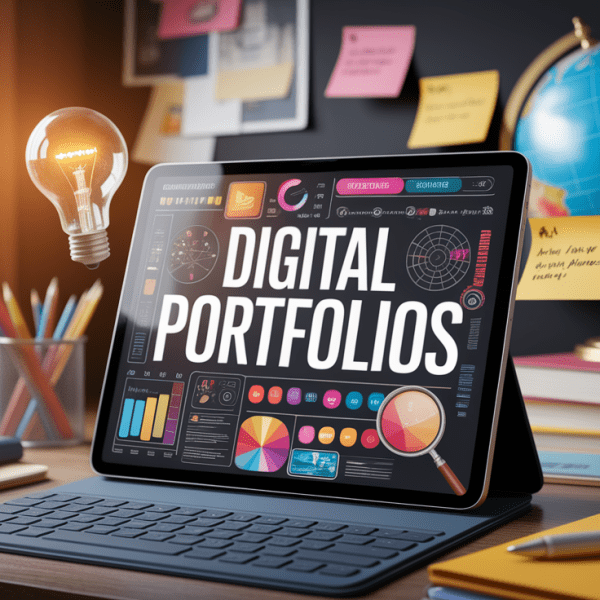Flip the Script: Introduction
Ready to turn your classroom upside down? Welcome to the exciting world of flipped learning, where homework becomes classwork and classwork becomes… well, something way more engaging! The flipped classroom model, pioneered by educators Jonathan Bergmann and Aaron Sams in the early 2000s at Woodland Park High School in Colorado, has revolutionized how we think about instructional design and student-centered learning.

This pedagogical approach reverses the traditional learning environment by delivering instructional content outside the classroom through video lectures, readings, or interactive modules. Class time is then transformed into a dynamic space for collaborative activities, problem-solving, and personalized guidance. According to a 2020 survey by the Flipped Learning Network, approximately 50% of U.S. teachers have tried some form of flipped instruction, with adoption rates continuing to soar post-pandemic.
The beauty of this blended learning model lies in its alignment with Bloom’s Taxonomy – students tackle lower-order cognitive tasks independently at home, while higher-order thinking skills are developed with your expert guidance during precious face-to-face time. Let’s dive into how you can create effective flipped classroom lesson plans that will have your students excited about learning!
Designing Effective Flipped Lesson Plans
Creating successful flipped classroom lesson plans requires intentional content design and a solid understanding of the four pillars identified by the Flipped Learning Global Initiative: Flexible Environment, Learning Culture, Intentional Content, and Professional Educator (FLIP).

Pre-Class Activities: Setting the Foundation
Your pre-class activities are the cornerstone of successful flipped learning. These asynchronous learning experiences should be engaging, accessible, and purposeful. Consider these strategies for designing pre-class activities:
- Video Lectures: Keep them short (5-15 minutes) and focused on one key concept
- Interactive Quizzes: Embed formative assessment questions to check understanding
- Reading Assignments: Pair with guided questions or digital annotations
- Educational Podcasts: Perfect for auditory learners and commuting students
Research from the Proceedings of the National Academy of Sciences shows that active learning increases student performance in STEM courses by 6% compared to traditional lectures, making your pre-class preparation even more crucial for success.
In-Class Activities: Where the Magic Happens
With foundational knowledge established at home, your classroom transforms into a laboratory for higher-order thinking. Here’s how to maximize this precious synchronous learning time:
- Peer Instruction: Students explain concepts to each other, reinforcing their understanding
- Problem-Based Learning: Tackle real-world challenges using pre-class knowledge
- Collaborative Projects: Foster teamwork while applying new concepts
- Socratic Seminars: Engage in deep discussions about complex topics
This approach supports collaborative learning strategies that make classroom time more interactive and meaningful for all students.
Differentiated Instruction in the Flipped Model
The flipped classroom naturally supports differentiated instruction by allowing students to consume content at their own pace. Self-paced instruction means advanced learners can dive deeper into topics, while struggling students can replay content multiple times. Consider implementing:
- Multiple content formats (visual, auditory, kinesthetic)
- Tiered assignments based on readiness levels
- Choice boards for in-class activities
- Flexible grouping strategies
Incorporating Universal Design for Learning principles ensures your flipped classroom materials are accessible to all learners, addressing potential barriers in the blended learning environment.
Leveraging Technology for Seamless Blending
Technology is the backbone of successful flipped classroom implementation. The right digital tools can make the difference between a smooth, engaging experience and technical frustration for both you and your students.

Essential Technology Stack
Building your flipped classroom technology toolkit doesn’t have to break the bank. Here are the essential components:
- Learning Management Systems: Canvas LMS, Google Classroom, Moodle, or Schoology for content organization
- Video Creation Tools: Screencast-O-Matic, Loom, or even your smartphone for creating instructional videos
- Interactive Content Platforms: H5P, EdPuzzle, or Nearpod for embedding questions and activities
- Assessment Tools: Khan Academy, Kahoot, or Google Forms for formative assessment
A 2022 report by the International Society for Technology in Education (ISTE) found that schools with robust digital infrastructure reported 40% higher satisfaction rates with flipped learning implementations. This highlights the importance of integrating digital tools effectively into your instructional design.
Creating Engaging Educational Videos
Your instructional videos are often the first touchpoint students have with new content. Make them count with these best practices:
- Hook them early: Start with a compelling question or real-world connection
- Keep it concise: Aim for 5-12 minutes maximum per video
- Include interactions: Pause points for reflection or embedded questions
- Provide captions: Ensure accessibility for all learners
- Use consistent branding: Create a recognizable style for your content
Addressing Digital Equity Concerns
One of the biggest challenges in flipped classroom implementation is ensuring equitable access to technology. According to the U.S. Department of Education, approximately 14% of school-aged children still lack reliable home internet access. Consider these solutions:
- Provide offline alternatives for content consumption
- Partner with local libraries for technology access
- Create mobile-friendly content that works on smartphones
- Offer printed materials as backup options
- Advocate for district-wide technology initiatives
Engaging Students and Fostering Accountability
The shift to student-centered learning in a flipped classroom requires new strategies for maintaining student engagement and ensuring accountability. This is where your role as a professional educator becomes even more crucial.

Building a Learning Culture
Creating a positive learning culture is essential for flipped classroom success. Students need to understand their new role as active participants in their education. Help them develop student autonomy through:
- Clear expectations: Establish ground rules for pre-class preparation
- Learning contracts: Students commit to their learning goals
- Reflection journals: Regular self-assessment of learning progress
- Peer accountability partners: Students support each other’s learning
Tracking Pre-Class Engagement
How do you know if students are actually engaging with pre-class content? Implement these accountability measures:
- Entrance tickets: Quick quizzes based on pre-class material
- Discussion boards: Online conversations about content
- Video analytics: Track viewing completion rates
- Concept maps: Visual representations of understanding
A 2021 study in the Journal of Educational Technology & Society found that flipped classrooms particularly benefit struggling students, potentially reducing achievement gaps. The key is maintaining high expectations while providing appropriate support through adaptive teaching strategies that respond to varying levels of student preparation.
Personalized Learning Opportunities
The flipped model creates natural opportunities for personalized learning. During class time, you can:
- Provide one-on-one coaching for struggling students
- Offer extension activities for advanced learners
- Facilitate small group discussions based on interests
- Address individual learning styles through varied activities
Assessing and Refining Your Flipped Model
Continuous improvement is the hallmark of effective flipped classroom implementation. Your assessment strategies need to evolve to match your new pedagogical approach, focusing on both formative and summative evaluation methods.
Formative Assessment in the Flipped Classroom
Formative assessment becomes even more critical in the flipped model, as you need to monitor understanding both before and during class. Consider these innovative assessment strategies:
- Pre-class check-ins: Brief surveys about content comprehension
- Real-time polling: Tools like Mentimeter or Poll Everywhere
- Exit tickets: Quick reflections on in-class learning
- Digital portfolios: Ongoing collection of student work
Measuring Success in Your Flipped Environment
How do you know if your flipped classroom is working? Look for these indicators:
- Increased student participation: More voices in discussions
- Improved test scores: Particularly on higher-order thinking questions
- Enhanced student satisfaction: Survey feedback about learning experience
- Greater content mastery: Ability to apply concepts in new contexts
A 2018 meta-analysis in the Review of Educational Research examining 114 studies found a small but significant positive effect on learning outcomes (effect size = 0.35), with particularly strong improvements in STEM subjects.
Addressing Common Challenges
Every flipped classroom implementation faces challenges. Here’s how to tackle the most common ones:
- Student resistance: Start slowly and explain the benefits clearly
- Time management: Use templates and batch content creation
- Technical difficulties: Have backup plans and tech support resources
- Parent concerns: Communicate the pedagogical benefits to families
Professional Development for Flipped Learning
Transitioning to a flipped model requires ongoing professional development. Invest in:
- Video creation and editing skills
- Learning management system training
- Active learning facilitation techniques
- Data analysis for learning outcomes
Seal the Success: Conclusion
Implementing a successful flipped classroom model is a journey, not a destination. By focusing on intentional content design, leveraging appropriate educational technology, fostering student engagement, and continuously refining your approach, you’re setting the stage for transformative learning experiences.
Remember, the goal isn’t just to flip content delivery – it’s to create a dynamic learning environment where students take ownership of their education while you provide expert guidance when they need it most. Start small, be patient with the process, and celebrate the victories along the way.
Your students are ready for this challenge, and with these strategies in your toolkit, you’re equipped to guide them toward deeper learning and greater academic success. The future of education is blended, and you’re leading the way!




